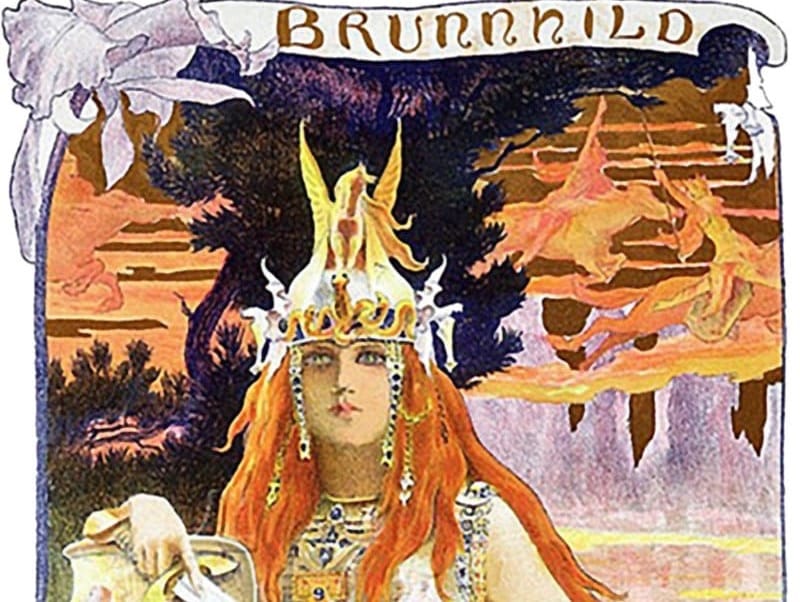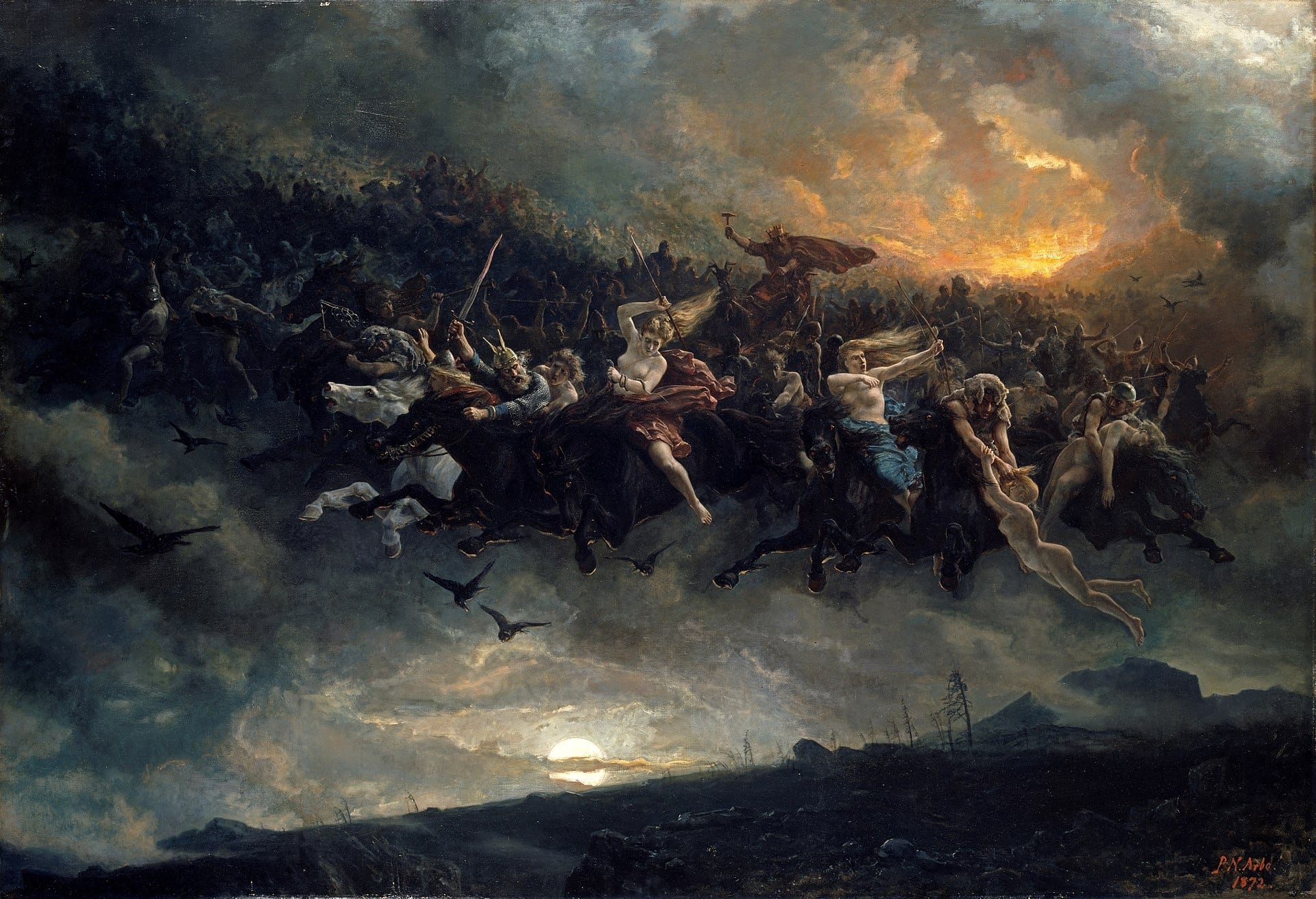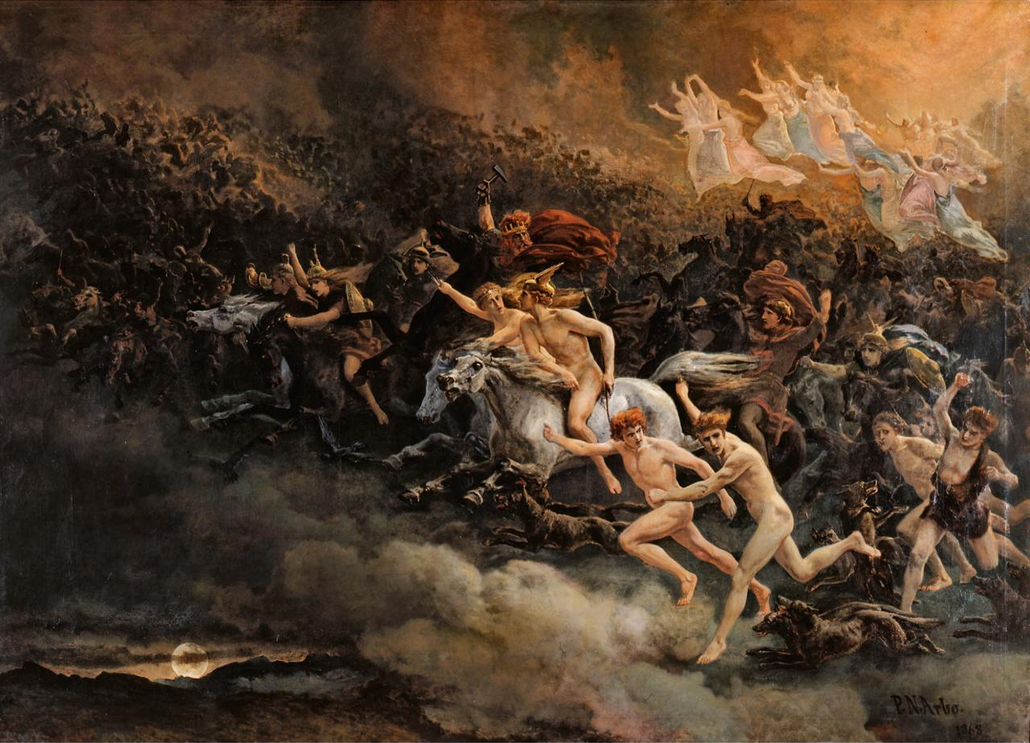Valkyries and Völvas

The Valkyries ("choosers of the slain") were the black warrior angels who appeared to the dying - as wraiths who would carry them away, usually after battle. It must have been both a fearsome and comforting image if you lay dying far from home, which is why the photo below (from Lithuania) better captures the matter, not warrior babes decked out on flying horses loaded with weapons that came to dominate later stories and paintings.

In the old Norse, Germanic, Celtic and Slavic cultures of northern Europe, the Valkyries and their close relatives the Völvas and the Norns offer a rich tapestry of women's roles that contrast with the male-dominated warrior tradition. Yet none of these strong female figures made their way into early Western European art and literature, aside from Shakespeare's weird sisters in Macbeth perhaps, and that's hardly favorable.
The völvas (literally "wand carriers") usually were older women who were called in at times of crisis like childbirth, war and funeral rites. They could sing you into the afterlife...

Above we see the warrior babes in action. This is Åsgårdsreien (literally "Asgard ride") aka The Wild Hunt of Odin, by Norwegian painter, Peter Nicolai Arbo in 1872.
This painting is interesting for the way it reflects the evolution of the Valkyries away from angels of the dead toward active leadership in war with full-on berserker madness and bloodlust by the 19th century. It also seems to have Thor (with his hammer) in the center when perhaps this should be Odin. At any rate, Arbo here is evoking the Wild Hunt, which in northern Europe was a vision in the sky of the gathering storm - a premonition of catastrophe, whether from invading armies or the plague, like the Four Horsemen of the Apocalypse.
Below is an earlier version he did in 1868 - same title - but it is inferior kitsch:

